10 years on: Bonny River flood left marks that linger to this day
The first indication Cal Craig had that his Bonny River home might be in danger of flooding came early on the morning of Dec. 14, 2010.
At around 1 a.m., his phone rang.
It was his cousin, calling to say "the water was coming up pretty fast."
The retired RCMP officer went outside and moved his car and his camper van to higher ground.
He also put a few things in his garage on top of his lawn tractor, just in case any water seeped in there.
Craig and his wife, Barb, had lived there for 17 years, and while the meadow in front of his home often flooded during the spring freshet in the Magaguadavic River, it was built on the far edge of the flood plain, according to current flood maps.

Built on a concrete pad, with only a crawl space and a small root cellar, flooding had never been a problem.
So he headed back to bed.
When daylight came, it quickly became clear that this was no ordinary rainstorm.
The meadow was under water.
So was the driveway.
In the garage, where Craig had carefully placed a few items on top of his lawn tractor to keep them dry, there was now five feet of water. The tractor was two feet below the surface.
And the water was rapidly encroaching on his house.
"My neighbour came up with his canoe and managed to free up the dinghy I had tied up, and he brought it over to the door," Craig said.
"I really didn't want to go, but I wanted to get my wife out. She had just had a back surgery and wasn't feeling very well."
But Craig's neighbour was having none of that talk.
"He said 'If you don't go now, you won't be able to go'."
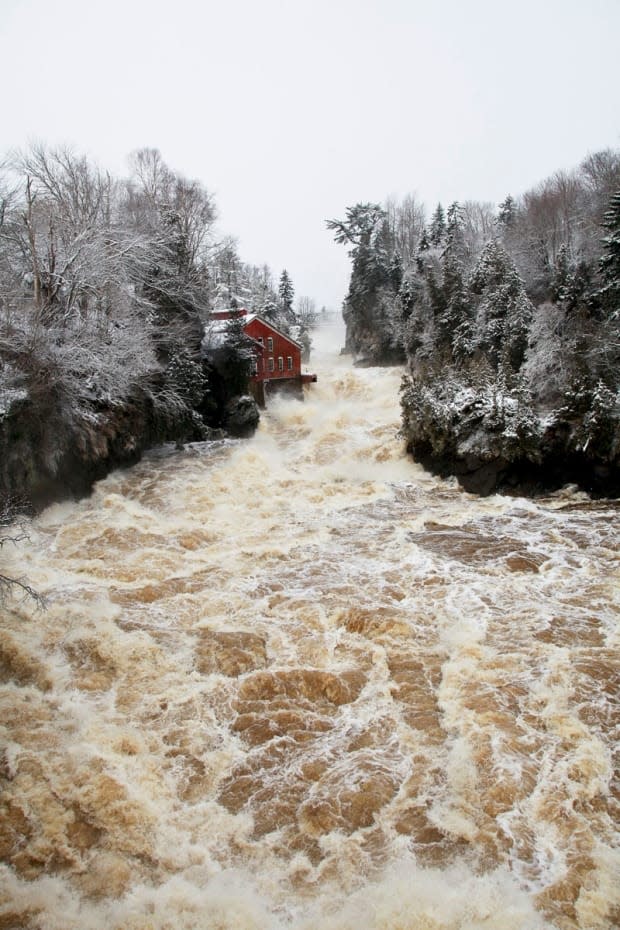
The couple got in the small boat, and Craig, then 74 years old, began rowing it up the submerged driveway.
That's when he realized this was no quiet pool of water — it was a raging river.
"The current was so strong, it swept us across the lot. I was rowing like hell," Craig said.
If it hadn't been for a cluster of trees on the property next door, he said, they might not have made it to higher ground.
"We'd probably still be going," he said with a chuckle.
Rain across the province
The heavy rains cut a swath through the west and centre of the province. The St. John River flooded at Fredericton, closing roads throughout the downtown.
Northwest of the capital, the Keswick River blew its banks, and 30 people in Zealand and Burtts Corner had to be rescued from their homes.
A large stretch of the main road through the two communities was washed out. The hole created was reported to be 4.5 metres deep and almost 400 metres in length.
One mini-home was completely swept away in the floodwaters.
The roads in and out of the community of Hoyt were also washed out, and 40 people had to be evacuated from their homes.
Both St. Stephen and McAdam declared local states of emergency, and the town of St. George had to evacuate homes from the floodwaters of the Magaguadavic River. Water was so high, the town's famous dam became an unexpected draw for winter sightseers as water poured over the top of the dam into the gorge below.
The province went to work dealing with the aftermath, but in Charlotte County, Bonny River wasn't on the radar yet.
St. Stephen had received 167 millimetres of rain in 24 hours. It swamped roads into the town and submerged businesses, and EMO focused its efforts there.
The situation in St. George was similar.
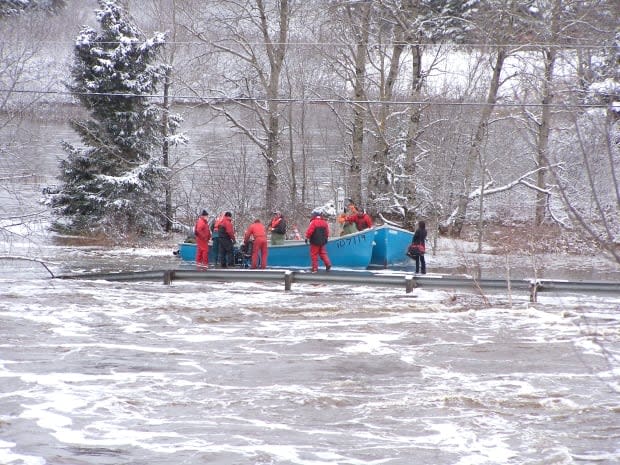
But EMO officials said that when the residents of Bonny River got into trouble, many of them called on neighbours with boats, or contacted Cooke Aquaculture, the biggest local employer with a fleet of boats, for help.
So there was no spike of 911 calls to warn the province of the issues in Bonny River and its sister community Second Falls.
At Cooke Aquaculture, however, calls were coming in.
Ted Weaire, a manager for Cooke, said that when the company heard that people were stranded, CEO Glenn Cooke immediately made the decision to respond.
"We have the luxury of having a lot of boats," Weaire said. "We had qualified, confident, competent, calm people who could do the work without causing damage to boats, or homes, or people."
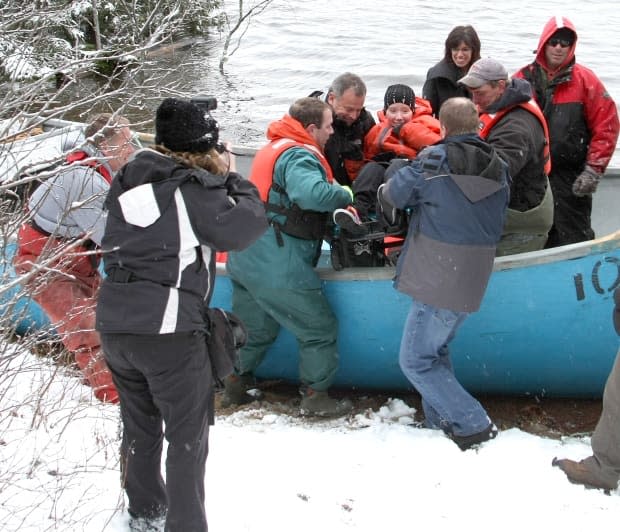
Weaire said it was important to have people who knew how to handle a boat, how to safely approach a home, and how to safely get people, many of them in shock, out and onboard.
Those crews headed into the cut-off community and an unforgettable experience.
"It's hard for people to grasp the magnitude of it," Weaire said.
"The visual aspect of it, when you're talking a boat with an outboard motor and you're taking it up roads — major roads — that's when it sinks in."
Lost in the mix
Rick Doucet was the Liberal MLA for the area at the time.
He remembers being in the legislature when his cellphone started to blow up with calls about Bonny River. Government officials had no idea what was going on there.
During a break, Doucet walked across the floor to talk to then public safety minister Robert Trevors about what he was hearing.
The next day, he joined the crew of a Cooke Aquaculture boat and took a trip into Bonny River.
By now, the only way to get there was by boat.
"It was pretty sad to see," he recalled. "People were in tears.
"We went into a house and, in the basement, there was a Christmas tree and gifts floating around in the water."
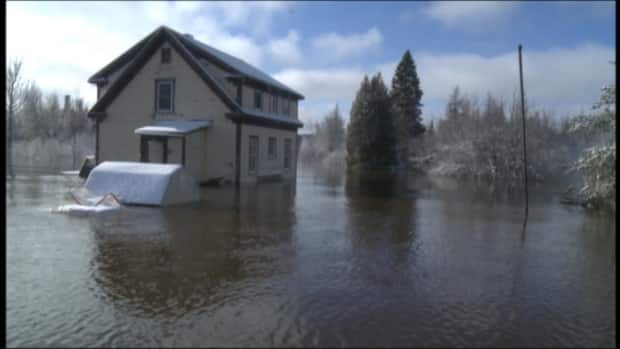
Doucet recalled seeing empty homes, surrounded by water, with Christmas lights still on because the power had not been shut off.
Some residents left their homes wearing only pajamas, he said.
On Dec. 15, then-Premier David Alward flew over Bonny River in a helicopter.
By then, the Red Cross had also been alerted to the magnitude of the flooding.
Bill Lawlor, now New Brunswick and P.E.I. director of the Canadian Red Cross, was in charge of its disaster management program in 2010.
The Red Cross set up at the Family Worship Centre in St. George, which became the headquarters for an operation that included Cooke Aquaculture, J.D. Irving, and EMO, and another shelter at the Bonny River fire hall in the trapped community.

For Lawlor, the operation hit home on a personal level, because there was a real sense of community involvement.
Because of that, the Red Cross adopted new ways of doing things that have stuck to this day.
The use of host families to take in people who couldn't return home, for example, was a first for the Red Cross. Lawlor said almost 60 families came forward to volunteer their homes to people affected by the flooding.
He said some didn't really have the resources to take in a family, but they volunteered nonetheless.
There was also an unprecedented involvement of corporations.
"And it was not just financial support, but resources as well," Lawlor said.
"There was not a day I didn't see Glenn Cooke."
Corporate help
Both Cooke Aquaculture and J.D. Irving provided support beyond the early rescue effort.
The companies bought Christmas gifts for families who had lost theirs in the flood, and employees wrapped them.
Lawlor said Cooke held a Christmas celebration at the local hotel, putting families up and providing a tree and gifts for them.
As people returned to the area to survey the damage, both companies provided pumps, dryers and dehumidifiers to help with the cleanup.
Electricians came in to replace electrical systems destroyed by water.
Well water was flushed and tested.
For Cal Craig, all of that was done for free.
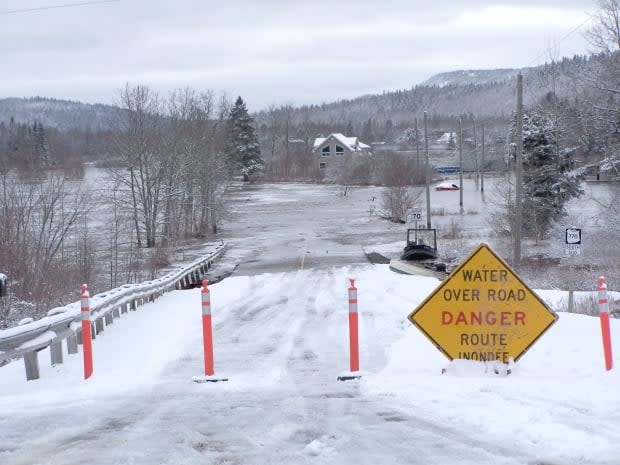
Craig and his wife spent a couple of days sleeping in their camper van, which they had rescued from the rising waters, but returned to their home on Dec. 16.
He calls that experience "pretty discouraging."
In some ways, they were luckier than most.
Their house, being on the very edge of the flood plain, had three inches of water in the main floor of the house.
Their log home had very little drywall, just two walls' worth, so it didn't need to be gutted.
But the crawl space and root cellar below the main floor were completely flooded, and the hardwood floors were badly warped.
To this day, there are still water marks on the walls.
When asked what the total damage tally was, Craig said he remembers signing a paper from his insurance company that contained the figure of $58,000, which included a 25-day stay in a local hotel.
But other Bonny River residents lost everything, or their properties were considered too flood-prone to make rebuilding feasible.
Six families were moved to a subdivision on land owned partly by Cooke Aquaculture and partly by the town of St. George.
J.D. Irving provided modular homes for the families.
Was the dam partly to blame?
Many people in the area believe the hydroelectric dam on the Magaguadavic River was at least partially responsible for the severity of the flooding.
Craig thinks it might not have been as bad if St. George Power, which runs the dam that provides power to the Irving Lake Utopia mill, had opened the gates a few days earlier to reduce the size of the headpond.
But, he said, while the company treated him well in the aftermath, it has never admitted the dam may have played a role in the flood.
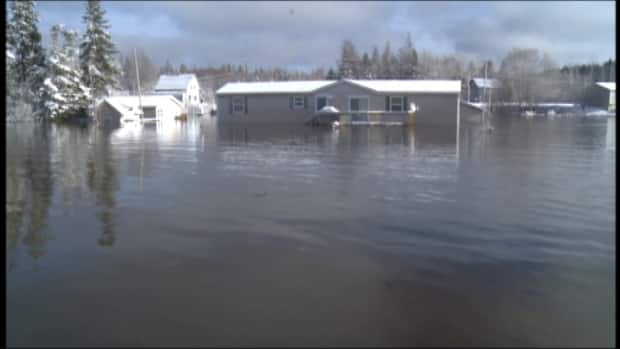
At the time, a company spokesperson told CBC News it manages the dam according to weather forecasts and water level information it receives. The company's spokesperson said they were caught off guard when the storm exceeded all expectations.
The operations of the dam continue to be a sore spot with residents, although the company now provides water-level information through a recorded message line.
Lessons learned
The Red Cross would be involved with the people of Bonny River for nearly a year. Unfortunately, Bill Lawlor said, mortgages don't disappear because your house is gone, so arranging new homes isn't a simple process.
The last family was moved out of their hotel room in late 2011 and into a new home.
The organization raised $640,000 for the relief effort.
"There was a fair bit of reservation about the Red Cross [in the community]," Lawlor said.
But as they left St. George after completing their work there, Lawlor saw a sign at a local fast food restaurant. It simply said: Thank you, Red Cross.
"It really meant a lot."
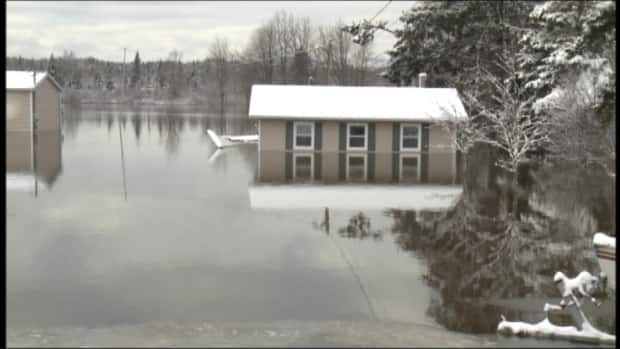
Ted Weaire of Cooke Aquaculture said that, to this day, the crews who worked to get people in and out of Bonny River are still involved in flood relief efforts around the province as volunteers.
He said EMO learned that they need local businesses and organizations to help in situations like this.
A government report into the event highlighted the value of local help. It also pinpointed problems with communication both within and outside government agencies.
"We have to be prepared," Weaire said, speaking about the role of the community in an emergency.
"Government is coming, but you can't plan to have the equipment ready for something like this. The community has to help themselves."
There were many days and nights without sleep, and it took a huge toll on the people who volunteered to help.
"I'm glad it's never come back," Weaire said 10 years after the flood, "but, it was a wonderful experience to be a part of it."
Every so often, he runs into people he helped, "just one person, or groups of like six to 10."
"Sometimes there's just a 'Hey!' " he said. "Sometimes there's a hug."


